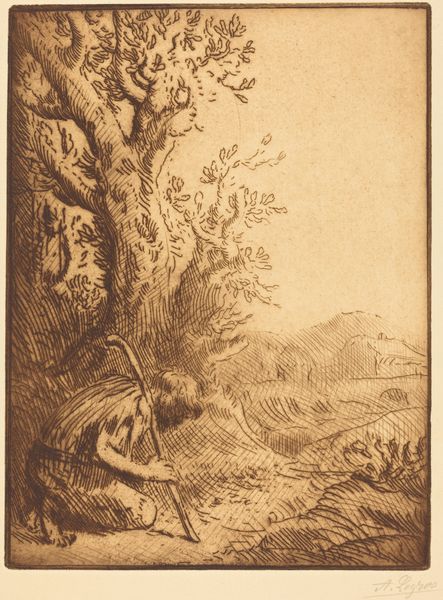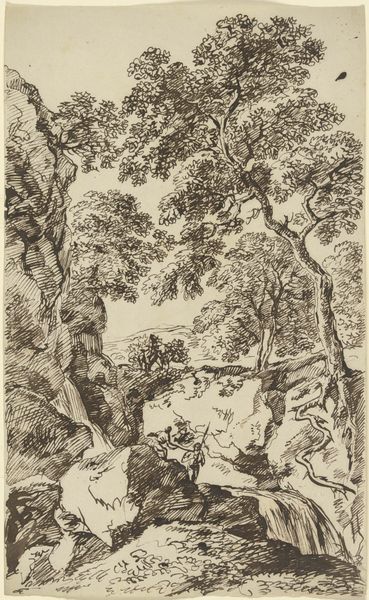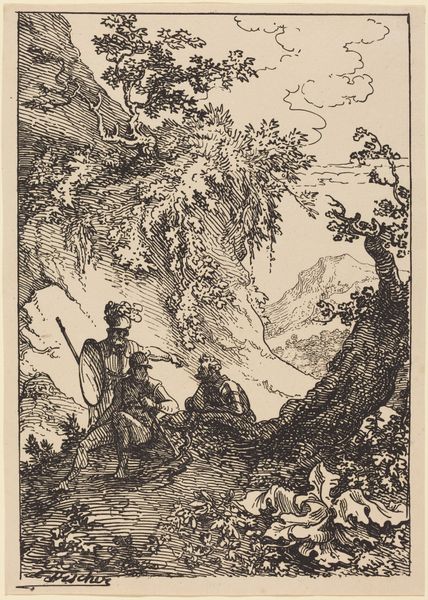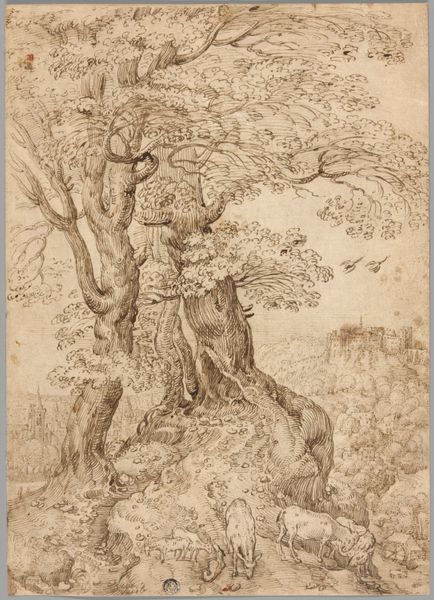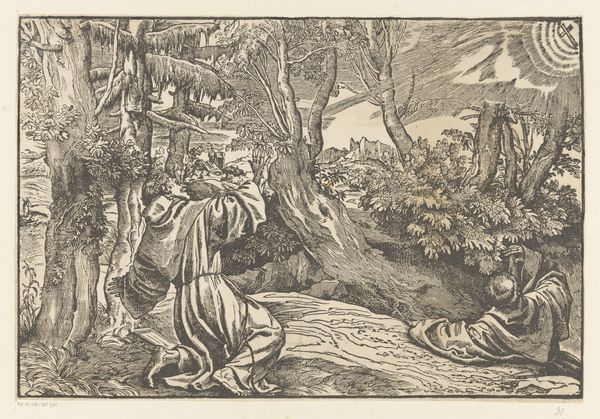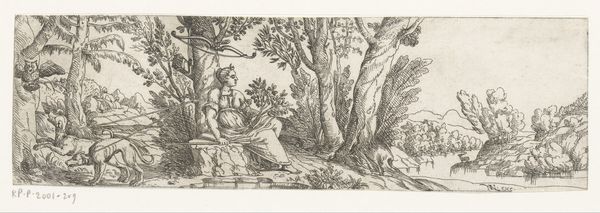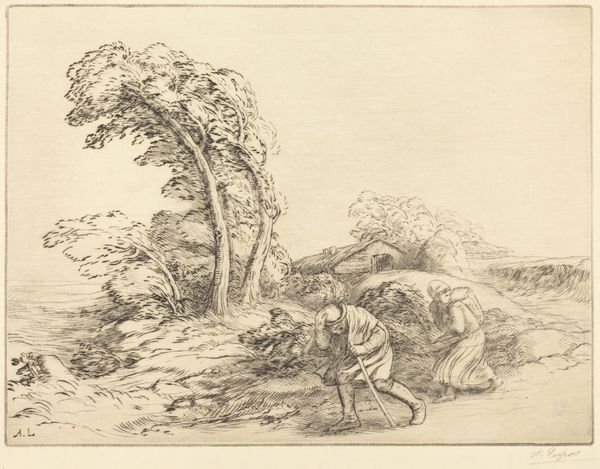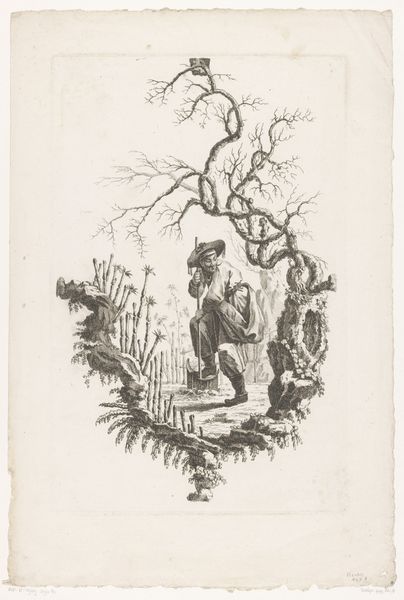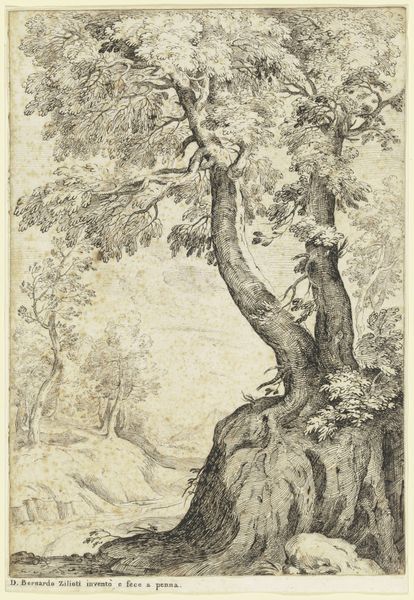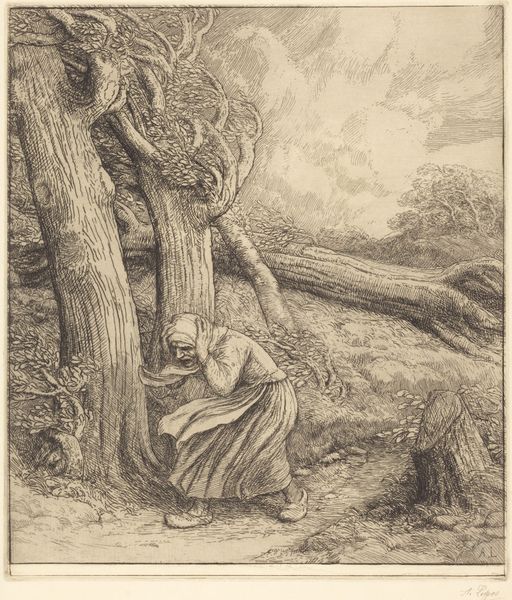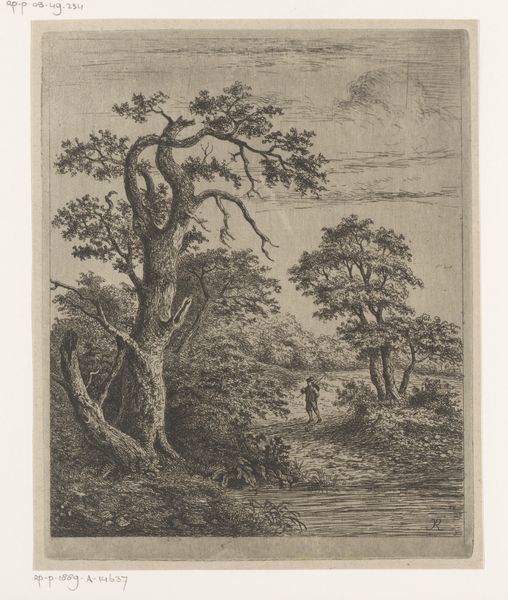
drawing, print, etching
#
drawing
#
16_19th-century
# print
#
etching
#
landscape
#
figuration
#
genre-painting
#
realism
Copyright: National Gallery of Art: CC0 1.0
Alphonse Legros made this etching, “Little Beggar,” sometime in the mid-19th century. It depicts a young man seated by the side of a road, perhaps an itinerant farmhand. The etching needle captures a sense of his dejection and the barrenness of his prospects. Legros came of age during a period of rapid social and economic change in France, and his work frequently reflects the plight of the poor and working classes. We can see the influence of the Barbizon School of landscape painting in the way Legros uses light and shadow to create a sense of atmosphere and depth. The rural setting and the sympathetic depiction of the beggar also connect to the Realist movement in French art, which sought to portray the lives of ordinary people with unflinching honesty. By studying the prints and drawings that were popular at the time, and by researching the social and economic conditions of 19th-century France, we can better understand the meaning and significance of this etching. “Little Beggar” reminds us that art is always a product of its time.
Comments
No comments
Be the first to comment and join the conversation on the ultimate creative platform.
